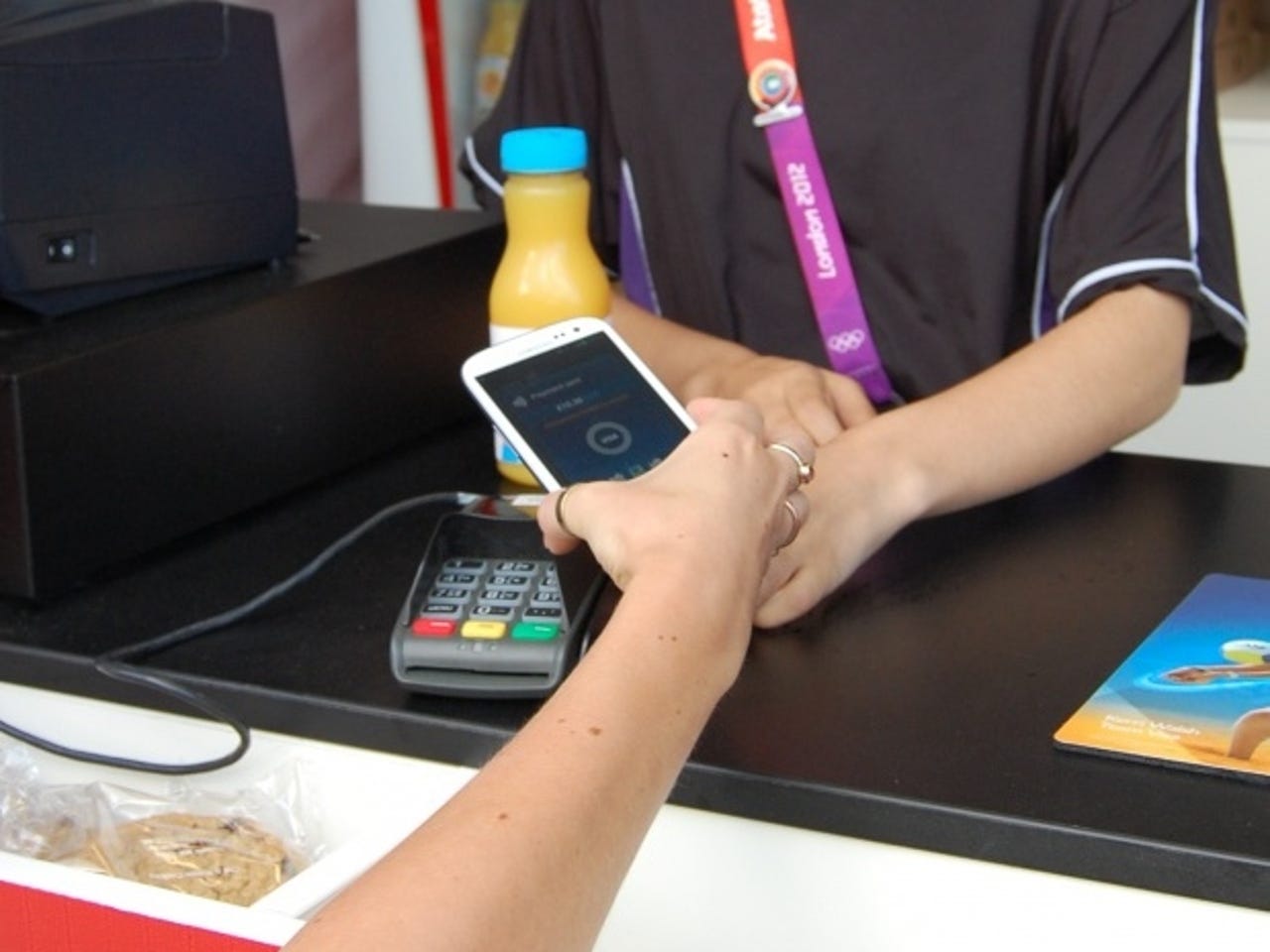Smartphone payments via NFC? Don't ditch your wallet just yet


Samsung and Visa are working together to promote mobile payments using NFC technology, but with many elements of the mobile payment ecosystem still not in place, and the significant absence of Apple from the market, it could be an uphill struggle.
Using your smartphone to pay for things seems like an obvious and easy win. Most people are as likely to carry a phone as a wallet, so combining the two makes a lot of sense.
Under the deal announced by Samsung and Visa at Mobile World Congress on Monday, Samsung NFC-enabled handsets will be preloaded with Visa's payWave app; banks can then load payment account information remotely using Visa's mobile provisioning service to those Samsung handsets for a mass NFC mobile payments rollout.
Mariano Dima, executive vice president of Visa Europe, is certainly bullish: "A Samsung device equipped with the Visa contactless payment service is a powerful proposition and will allow us to make mobile payments a reality for people around the world."
The companies said the deal could pave the way for the implementation of large-scale mobile payment programmes, pointing to numbers from ABI Research forecasting that a total of 1.95 billion NFC-enabled devices will ship in 2017 — although in 2013 the number will be nearer to 200 million.
According to ABI Research, nine out of the top 10 manufacturers now have NFC-enabled handsets commercially available, with most housing an embedded secure element solution. NFC will therefore come out of its 'trial phase' in 2013. ABI expects NFC-enabled handset shipments to more than double this year, with NFC inclusion "likely to become a default technology integrated into flagship handsets".
Samsung's existing flagship smartphone, the Galaxy S3, already has NFC inside (indeed, Visa and Samsung tested out mobile payments with athletes at the 2012 London Olympics).
Nokia's Lumia 920 handset also includes NFC, as does BlackBerry's new Q10 and Z10. And following the Samsung–Visa alliance announcement, it would be a pretty big surprise if the forthcoming Galaxy S4 didn't also have NFC.
Samsung and Visa aren't the only companies talking about NFC payments: MasterCard also used Mobile World Congress to show off an update to its MasterPass digital wallet, which supports NFC.
Raising the profile of NFC
Visa is an internationally trusted payment brand, and Samsung is the top smartphone manufacturer in terms of shipments. Both companies are likely to put effort and marketing muscle into making consumers aware of the potential benefits that NFC payments can bring, said Eden Zoller at consumer analyst at research firm Ovum.
"For most consumers, mobile payments — let alone NFC — is simply not on their radar" — Eden Zoller, Ovum
But that marketing muscle is desperately needed, as Zoller points out: "For most consumers, mobile payments — let alone NFC — is simply not on their radar."
Zoller said this was backed up by Ovum's research, which found that when consumers were asked to rank their most frequently used applications, mobile commerce-related applications were very low down on their list compared to mobile games, email and social networking. Meanwhile, Visa says contactless payments have quadrupled over last year and now generate around 13 million transactions per month.
That sounds impressive until you realise that's about the same number of transactions that Visa Europe processes in about 12 hours.
NFC is about a lot more than payments of course — there are some interesting applications around transferring documents and access to buildings, for example. But a whole set of factors still hold back widespread usage of NFC for payments.
Drawbacks to NFC
The benefits to the credit card company, the retailer and the handset maker are all clear: more transactions, quicker transactions and more loyal customers among them.
However, consumers can't see the benefit to them — especially as they remain happy enough with credit cards and cash.
NFC in itself won't make your physical wallet disappear, even if it makes it a bit thinner — which isn't a compelling reason unless you're obsessed with the fit of your jeans or suit.
Another big problem is the fact that the infrastructure isn't there. Even if you wanted to use your phone to pay for a sandwich today, there are very few places you can because the deals between banks, credit card companies and handset manufacturers still haven't been done.
Each of these issues can — and will — be overcome in time, but until there's a compelling customer need smartphone payments will struggle. It's worth noting that although contactless credit cards are widely available, they're still rarely used (although I'm personally a fan). So to get consumers to make the even bigger leap to using their phone for payments will take even longer.
The big holdout
Oh, and that one manufacturer who isn't using NFC?
Apple.
The iPhone 5 doesn't include NFC, which means few retailers or banks will be willing to invest in anything more than trials — which is what we've seen for the last few years.
Of course, the iPhone isn't the only smartphone around by a long chalk, but it's still extremely influential and many organisations will remain wary of mobile payments until Apple's plans are clearer.
And Apple can afford to wait, because until the infrastructure and the consumer need is there, it can't be late to market.
Smartphone payments will be commonplace one day — but don't ditch your wallet just yet.